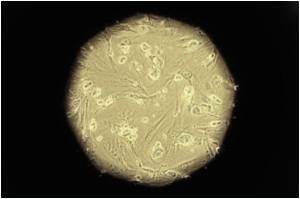UT Southwestern Medical Center researchers have identified unique metabolic properties that allow a specific type of stem cell in the body to survive and replicate in low-oxygen environments

These cells, called hematopoietic stem cells, are found in marrow and can replicate quickly. Once transplanted, they eventually develop into blood and other types of cells. Their ability to self-renew before they transform into blood forms the basis of their usefulness for bone-marrow transplants.
"The cells convert glucose, or sugars, into energy rather than using oxygen to release energy," said Dr. Hesham Sadek, assistant professor of internal medicine at UT Southwestern and senior author of the study
"They use glycolysis instead of mitochondrial oxidative phosphorylation to meet their energy demands."
Dr. Sadek and his team sought to understand how hematopoietic cells regulate their metabolism in spite of their inhospitable environment and found the cells expressed a certain gene in a way that enabled them to function without using oxygen.
The study has been published in the September issue of the journal Cell Stem Cell.
Advertisement











